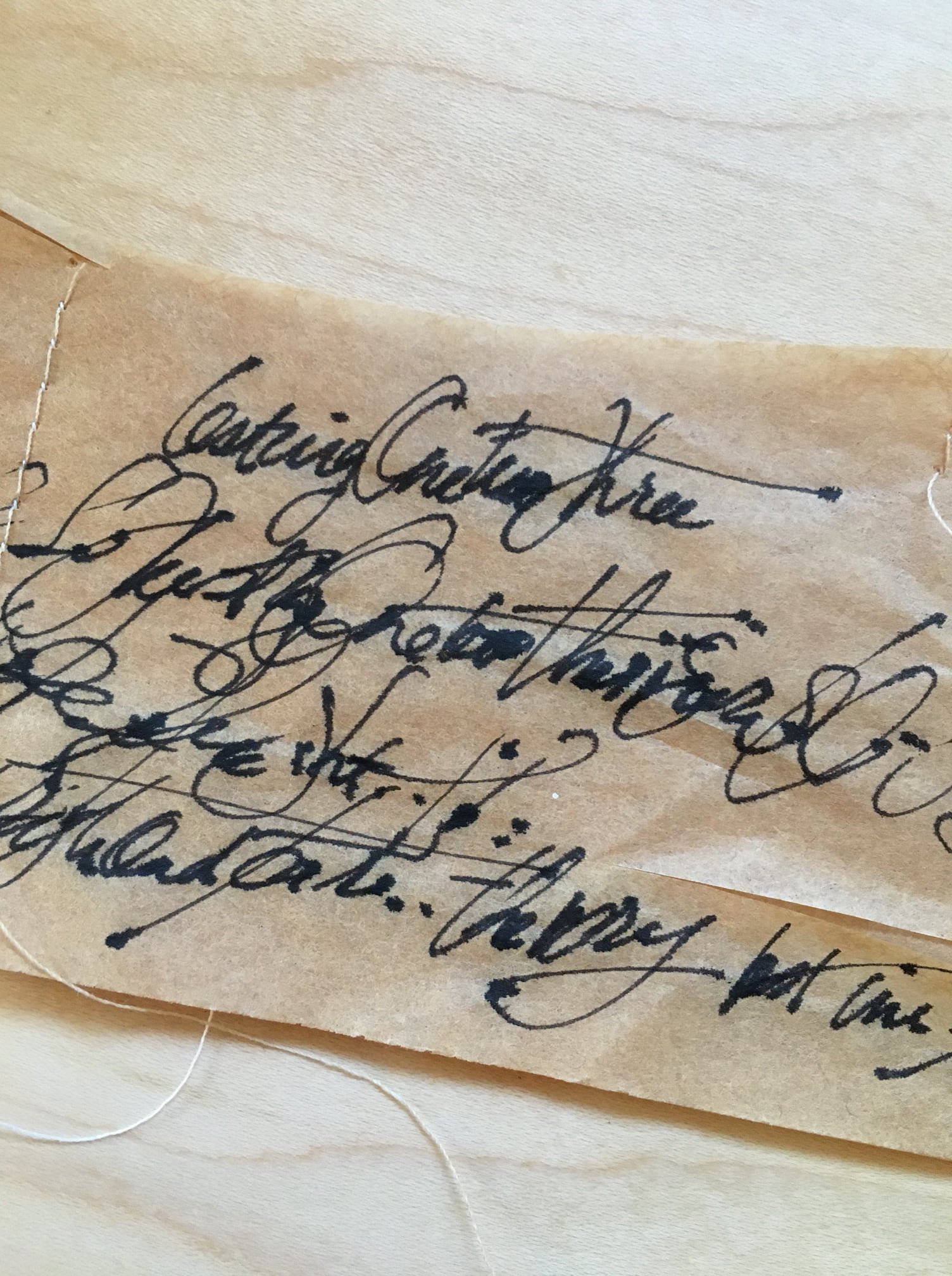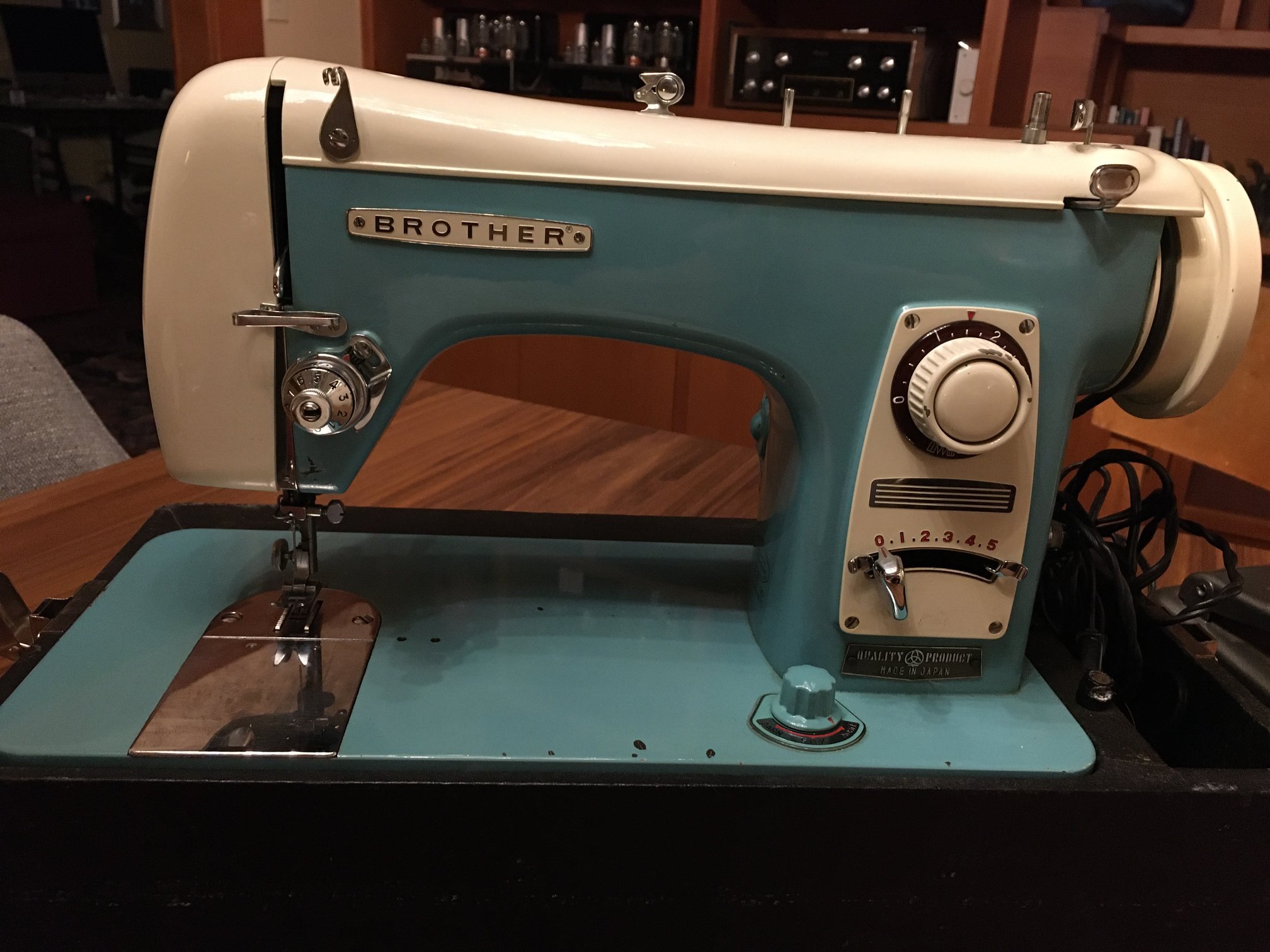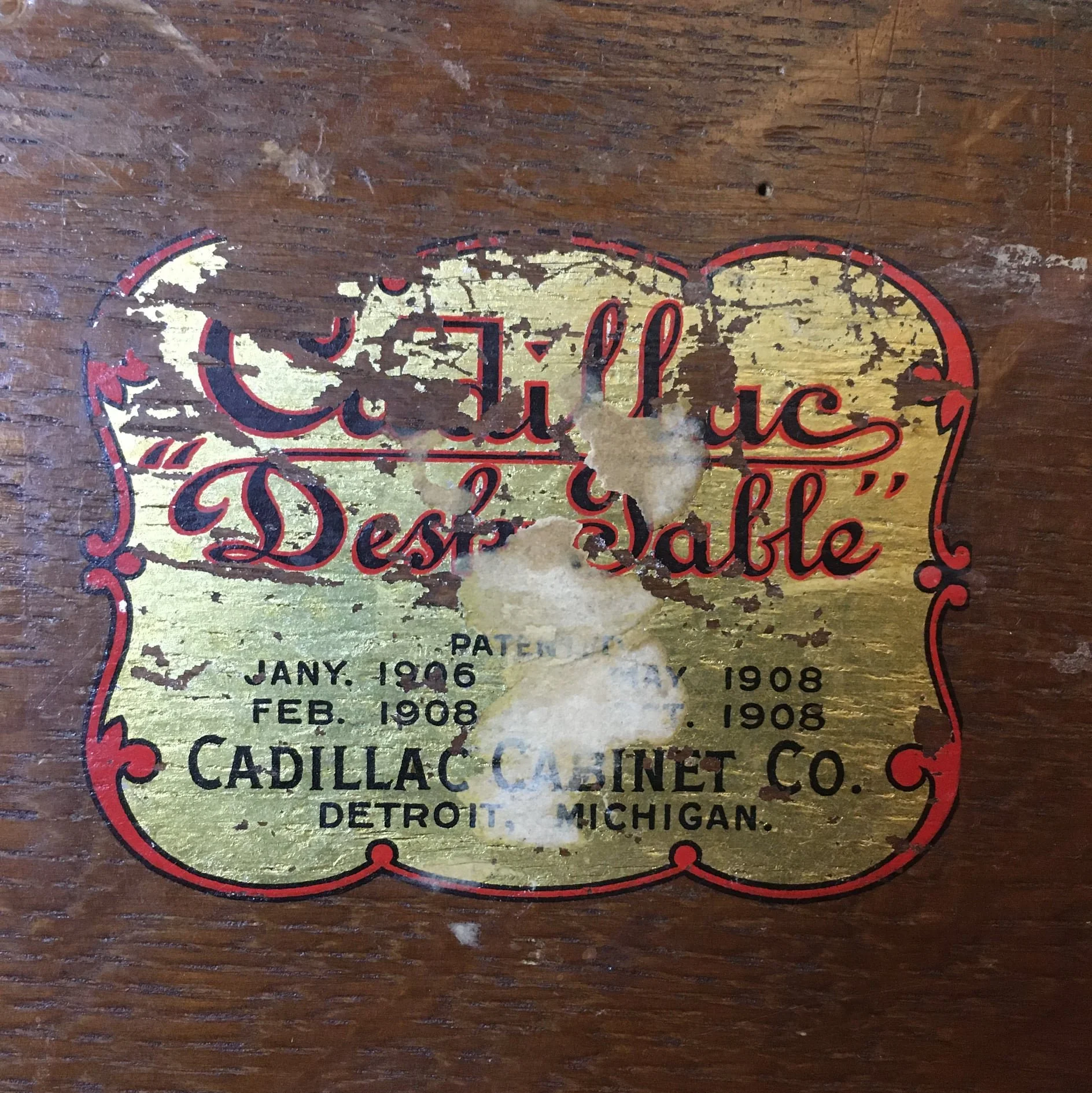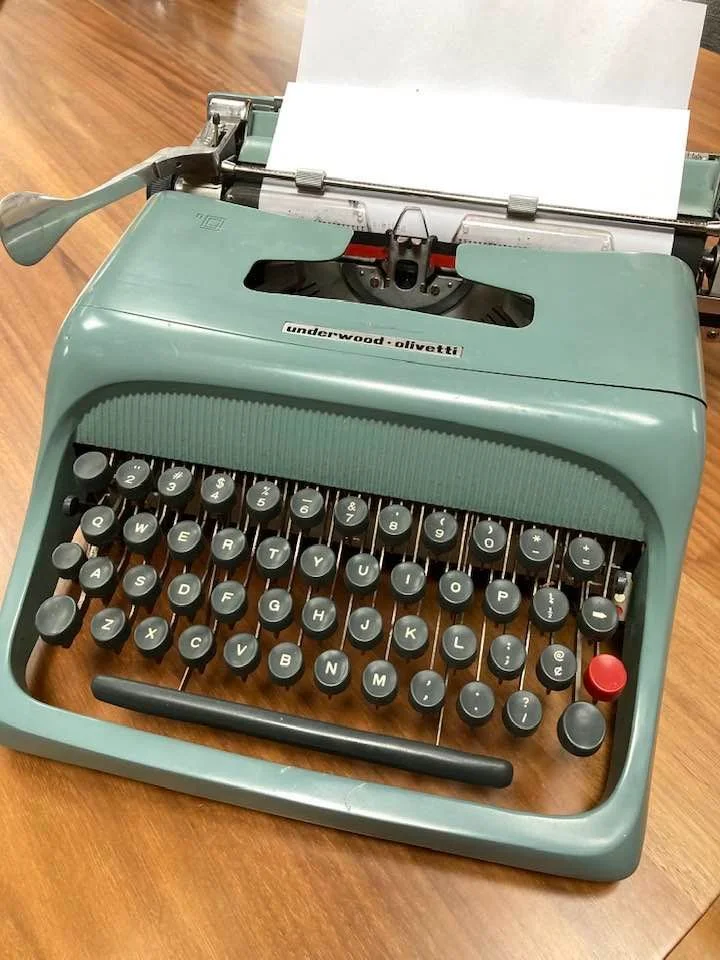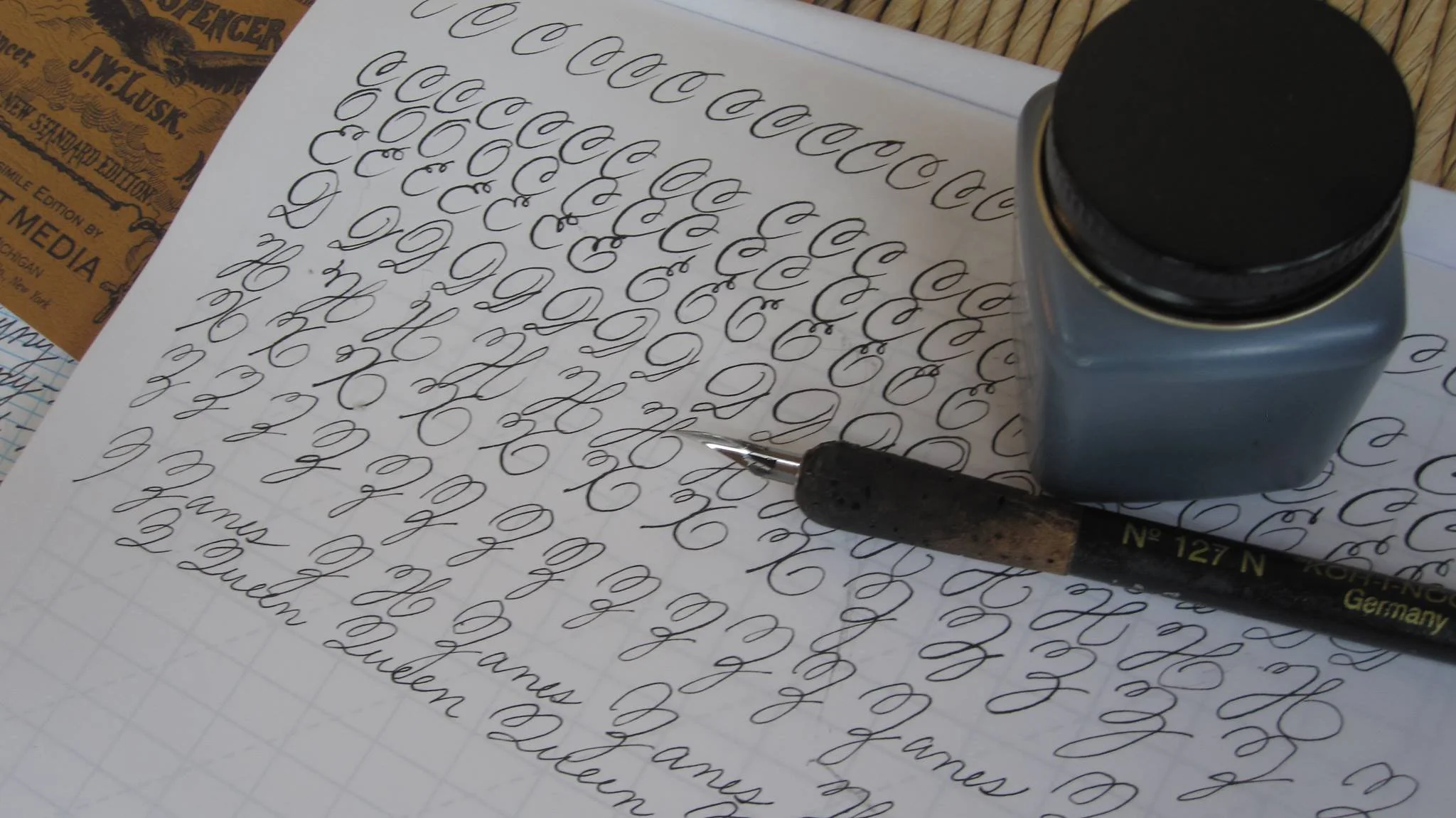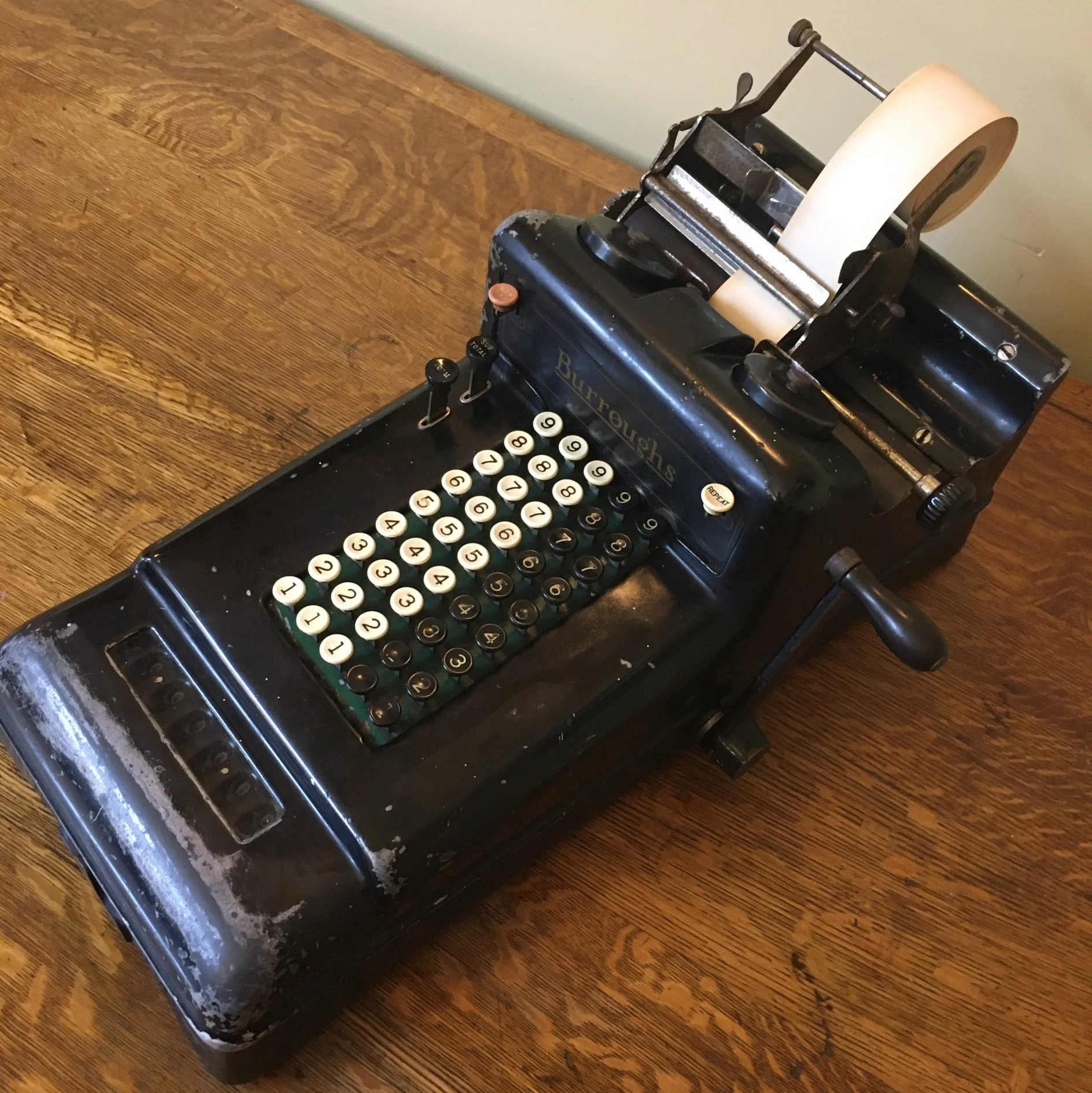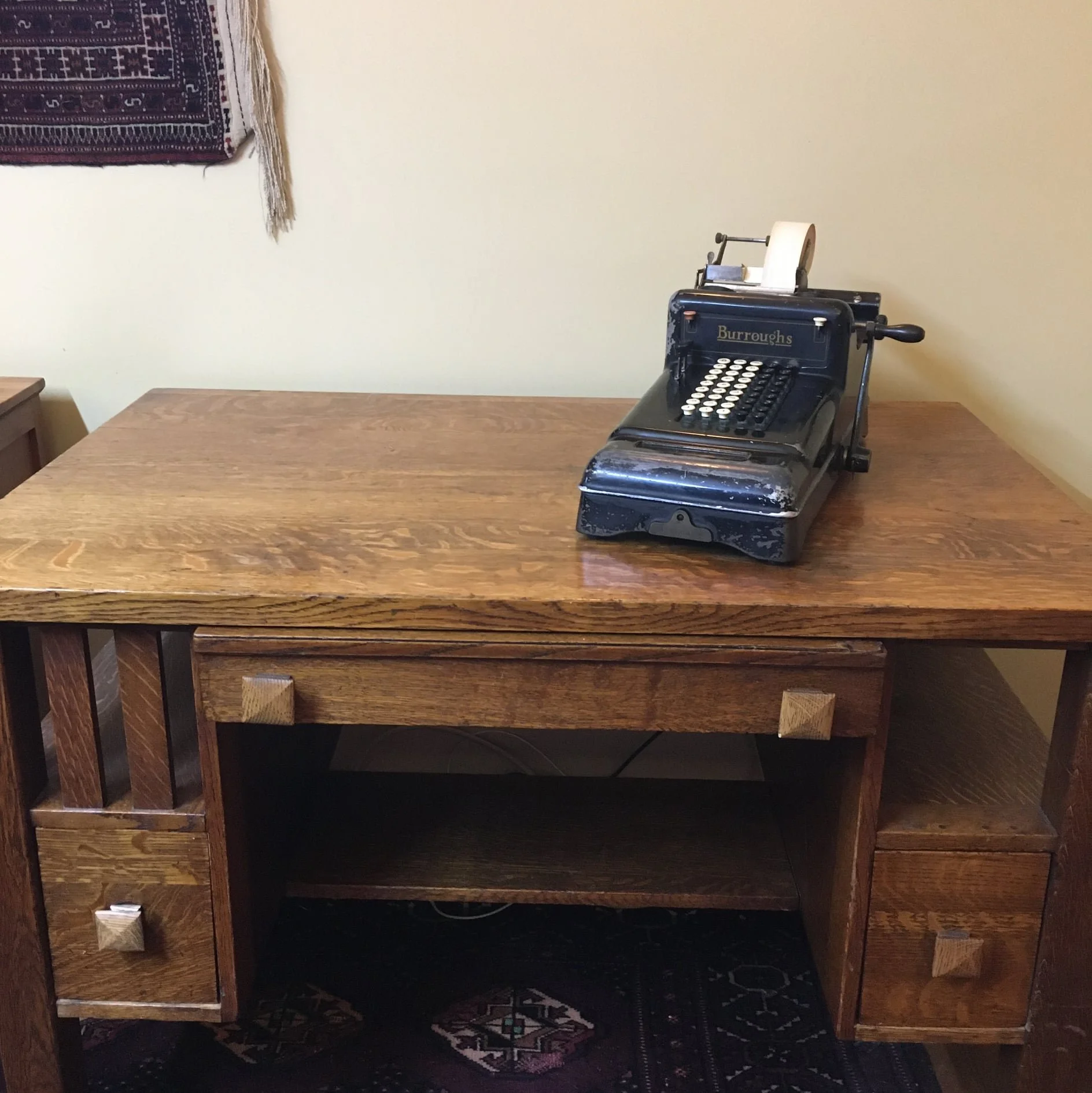Tools of Time Travel
One of the great joys of making art comes from using great tools and especially tools with their own history, known or imagined. One of mine is a Pfaff 30 sewing machine, which not only looks and smells like an oil-blackened locomotive, but it sounds like one slowly rounding a bend.
Because I prefer to use vintage and antique equipment and tools in making art, the act of making becomes a kind of time travel. I don’t know who owned this hefty Pfaff sewing machine before me so I fabricate fictions. Certainly, Rosie constructed her coveralls on this machine before heading to her day job riveting airplanes. My sewing machine is too modern to have been used to construct parachutes for the war effort, as some home sewing machines did, but it may have made professional clothes for Joan Holloway's entry into the narrow opportunities offered by pink collar work in the early 60s.
Thanks to a name penned inside, I have more provenance about my sharp 1961 Underwood Olivetti Studio 44 typewriter. It was previously owned by Juliette M. Chiodo (now Chiodo Heinz) who was in the Georgetown University Class of ‘68 and whose Saturday night soiree was abruptly canceled when President John F. Kennedy was assassinated. In 1993, a quarter century later, the class of ‘68 reunited for a gala on the White House lawn, organized by fellow-alum, President Bill Clinton.
I know nothing about the history of my 1908 Burroughs adding machine but my grandparents owned a similar one that sat on the oak Cadillac desk-table that is now stationed in one corner of my studio. The Cadillac Cabinet Company of Detroit made these desk-tables, which were advertised especially to women and sold widely in the early 1900s. My desk had a previous life as the nerve center of my grandparents’ plant nursery business. As a kid, I was drawn like a magnet to the adding machine’s rows of buttons; it’s the ultimate play-toy because there’s no way I could possibly damage this roughly 45 lbs. of cast iron and steel. It’s laughable that this is considered the portable model!
I use the adding machine to create rows of randomly chosen numbers on my paper shoes and clothes. Adding machines represent to me the near apex of the Industrial Revolution’s commodification and reduction of everything, from people to trees, to mere rows of numbers to be manipulated, bought and sold in a soulless fury.
The Cadillac desk has a space for an ink well, which is handy because I use ink with a steel-nib dip pen to create Spencerian script calligraphy and asemic writing. I learned Spencerian script using reproductions of the very workbooks that taught handwriting in school to children, like my grandmother. Tip: it’s all about good posture, good form and repetition. Spencerian script was considered a very modern and scientific form of calligraphy because Mr. Spencer determined (how?) that a 52-degree slant to the letters was the most efficient. The standard for professional correspondence at the time, it was later made obsolete by the typewriter.
This scritching of a steel pen on paper, the chugging of a sewing machine, the bell ring when the typewriter carriage reaches the end of a line of type, the clanging of the adding machine’s gears snapping into place and authoritatively stamping the results on a reel of paper tape: this is my quasi-time machine. Now, I need to find a dip fountain pen with a good story. Got one?
P. S. I talked a bit more about this in an artist talk about my Anthropocene installation at the Jefferson Museum of Art & History. You can view it using the password: Rudd2022! (Don’t forget the exclamation point!)

